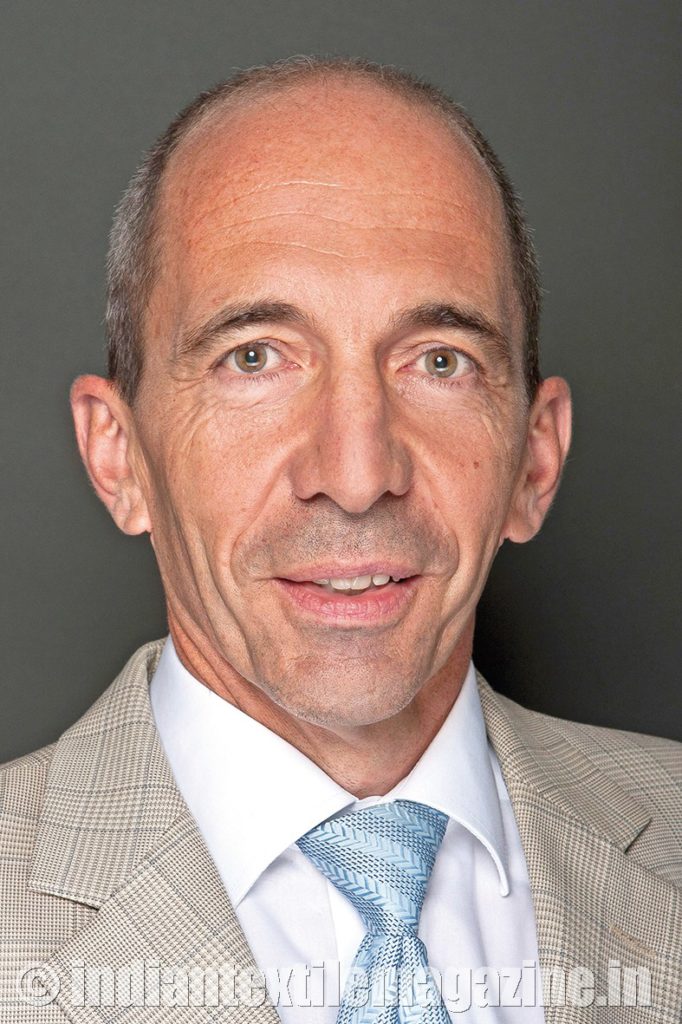“India is traditionally one of the top markets of the VDMA member-companies. Many VDMA companies can proudly point

back to decades of close customer relationships which are based on mutual trust. India is not just an export market. It is also a production and sourcing hub. Well-known VDMA members are producing directly in India, feeding the demand of the Indian domestic market as well as of other Asian countries”, said Mr. Thomas Waldmann, Managing Director, VDMA Textile Machinery, Germany, to The Textile Magazine.
At the VDMA Textile Machinery Conference and B2B-Forum in Mumbai, to be held on May 15 and 16, over 30 well-known VDMA textile machinery and component manufacturers will hold 36 application-oriented presentations on spinning, knitting, weaving, finishing, dyeing and embroidery. “Other important cross topics, such as automation, digitalization (Industry 4.0) and smart production technologies will show Indian textile manufacturers as to how to improve their competitiveness”, he says.
State-of-the-art technology will be presented in three sessions during the conference: Textile Machinery & components for the fiber & yarn industry (May 15, 2018), Textile Machinery & components for the technical textiles and nonwovens industry (May 15 and 16, 2018) and Textile Machinery & components for the apparel, home textile & carpet industry (May 15 and 16, 2018). Networking among the participants and experts will be reached also through a B2B meeting area and conference dinner or a high tea.
Answering a question on the performance of its member-companies in 2017, Mr. Waldmann said: “Production, sales and exports were highly pleasing in 2017. This positive trend was for the benefit of all stages of the value chain. Delivery times increased significantly in some sectors. The big Chinese market is performing well and is expected to continue in this way for the coming months. India is developing at a slower pace, but the market players expect further improvement in 2018 due to the funding programme ATUFS and the new VAT regulations. Majority of the VDMA members are also expecting a good to very good market climate in the US and Europe.”
The key global markets for VDMA in 2018, he says, will again be China, India, the US and Turkey. The Turkish market was difficult after 2016, but the situation is improving. Market segments with promising future growth are especially the ones focusing on automation which make production processes more reliable.
Industry 4.0
Internet has led to profound changes in business and in private life. The advent of internet into the industrial value chain (e.g., production as well as up and downstream areas) is considered to become the core of a new industrial revolution (the Fourth Industrial Revolution). I40 can be applied to the internal co-operation within a company, its production and its products, by integrating external partners and customers, too. I40 is a ‘solution space’. It has many dimensions and fields of application.
The textile machinery manufactures organized in the VDMA have in view Industry 4.0, the fusion of information technology and machine building. Examples are software tools for networking of machine parks with up to a thousand machines, or workflow management systems, designed to detect and optimize the production processes within a production stage, e.g., spinning or texturing, and overall production stages, starting with the raw material up to the end product.
Sustainable manufacturing
The VDMA Textile Machinery Association and its members appreciate the ambitious energy and climate policy objectives that many countries introduced for the conservation of resources. The resulting challenges for textile companies offer additional opportunities to increase energy efficiency, reduce costs and boost competitiveness. The Sustainability Guidelines of the Mechanical Engineering Industry are mandatory for all companies participating in the VDMA sustainability initiative Blue Competence. With its market-leading technologies and machinery, many German textile machinery manufacturers are successfully offering environmentally-friendly energy and resource-efficient solutions around the entire world: a prerequisite for energy savings.
In a complex textile process, however, the proper use of machines is equally important for achieving the expected total energy saving. The textile manufacturer can exert a decisive influence on the energy efficiency of his production technology even through the choice of spare parts and service intervals. Lack of maintenance of textile machinery and the use of inferior wearing parts reduce the efficiency of machinery and increase energy consumption.
Of late, there has been a lot of consolidation and acquisition happening in the German industry. On the one side we see German textile machinery manufacturers acquiring other German companies which complement their product range, and on the other side, we also see many major German companies being acquired by Chinese groups.
Commenting on this scenario Mr. Waldmann said: “This situation is an indicator of how deep China is integrated in the world economy. China’s WTO accession in 2001 was an essential catalyst for globalisation. Chinese investing in real estate in London or in European companies is yet another proof of how closely economies are linked today. Concerns that German technologies are being withdrawn by investors is in clear contrast to the predominantly good experiences, which the mechanical engineering industry has made with investors from abroad.
Another development in recent times has been the return of textile manufacturing to developed economies like the US and Europe. With increasing levels of automation, the concept of cheap labour doesn’t make sense anymore in some product categories. Higher efficiency and agility can result in the relocation of production closer to the customer in Europe, like the example of Adidas showed. But in general, value chains in the textile industry will remain internationally spread around the world. Although witnessing an increase of protectionist tendencies, we are still living in a globalized world and that also means an international division of labour.